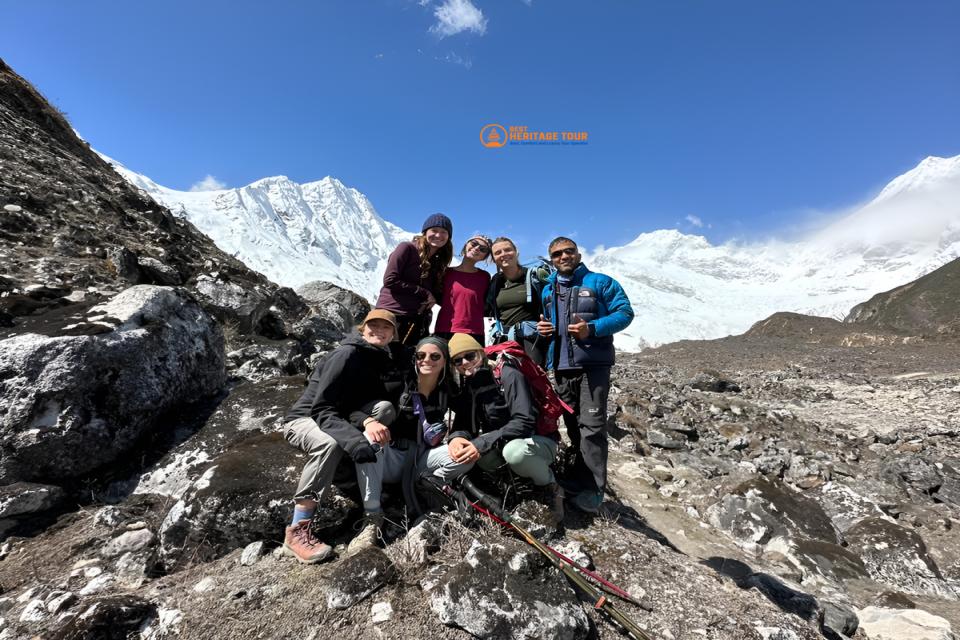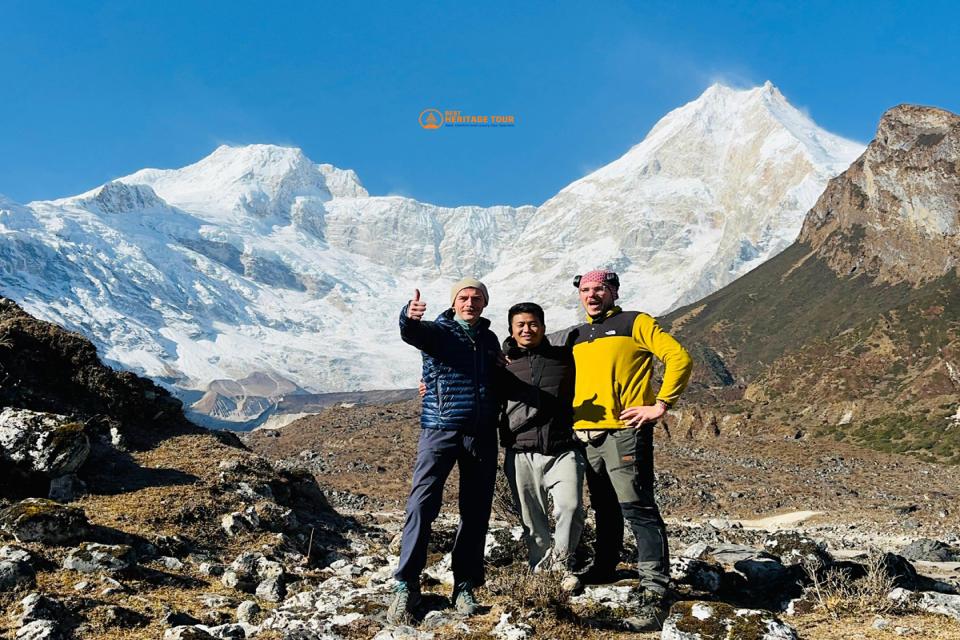The Tsum Valley Trek is one of Nepal’s most culturally rich, spiritually inspiring, and naturally stunning Himalayan journeys - yet still surprisingly less explored compared to popular trekking regions like Everest or Annapurna. Hidden deep within the northern region of Gorkha District, the sacred Buddhist valley of Tsum - also known as The Beyul of Happiness - offers trekkers an immersive blend of dramatic landscapes, ancient heritage, warm-hearted Tibetan-influenced communities, remote monasteries, and untouched Himalayan wilderness.
For travelers seeking an off-the-beaten-path trek filled with authentic cultural encounters, panoramic mountain scenery, and a peaceful environment far from crowded trails, the Tsum Valley Trek stands as one of Nepal’s ultimate hidden gems. This detailed blog offers everything you need to know - from history, highlights, and cultural insights to trekking routes, permits, difficulty levels, packing advice, best seasons, and local insider tips from the perspective of a Nepali guide familiar with this region.
What Makes Tsum Valley So Special?
Tsum Valley was officially opened to foreign trekkers only in 2008, which means it has managed to preserve its traditional lifestyle, ancient monasteries, and unique socio-cultural identity. Unlike commercialized trekking destinations, Tsum still feels like a living museum of Himalayan civilization.
The word “Tsum” derives from the Tibetan term “Tsombo”, which means vivid or brilliant. It truly lives up to the name - both visually and spiritually.
Trekkers here often describe a powerful sense of peace thanks to the valley’s sacred status among Buddhist practitioners. For centuries, monks and yogis - including the revered saint Milarepa - meditated in the mountain caves scattered throughout the valley.
Walking through Tsum feels like stepping back in time. Here you’ll encounter:
-
Ancient Gompas (monasteries) like Mu Gompa and Rachen Gompa
-
Buddhist stupas, chortens, and prayer wheels lining the trails
-
Mani walls stretching hundreds of meters
-
Unique polyandry tradition, practiced by some families
-
Stunning views of Ganesh Himal (7,422 m) and Sringi Himal (7,165 m)
-
Villages that still follow centuries-old Tibetan traditions
This deep spiritual and cultural richness makes the Tsum Valley Trek more than just a physical journey - it becomes a profound cultural and emotional experience.
Where is Tsum Valley Located?
Tsum Valley lies in Northern Gorkha, adjacent to the border of Tibet. It is nestled between the Ganesh Himal range to the west and the Sringi Himal range to the east. Because of its remote location, the area remains isolated from mainstream tourism, making the trek ideally suited for adventure seekers wanting a raw, authentic Himalayan experience.
Is Tsum Valley Trek Difficult?
Tsum Valley Trek is considered a moderate trek in terms of difficulty. The trails are not technically challenging, but they do include steep ascents, rugged terrain, and high altitude exposure - especially when approaching Mu Gompa. Trekkers with basic fitness can complete the trek comfortably with proper acclimatization.
Tsum Valley Trek: Duration and Distance
A standard trek takes about 10-16 days, depending on your pace and whether you combine it with the Manaslu Circuit Trek. The trek covers approximately 110-130 km round trip. Because of limited transportation options beyond Machha Khola or Soti Khola, most trekkers walk all the way to the valley and back.
Why Tsum Valley is Called a “Hidden Valley”
In Tibetan Buddhism, a Beyul refers to a hidden valley blessed by Guru Rinpoche (Padmasambhava) as a place of refuge and spiritual purity during troubled times. Tsum Valley is believed to be one such sacred place and has long been used by monks as a meditation retreat.
The valley’s remoteness and late opening to tourism helped preserve its spiritual heritage, local traditions, and pristine environment. Even today, Tsum has fewer modern facilities compared to major trekking routes, which enhances its authenticity and charm.
Major Highlights of the Tsum Valley Trek
Here are the unforgettable experiences that make this trek unique:
1. Culturally Rich Villages
Villages like Chhekampar, Chumling, Nile, and Burgi reflect the Tibetan-influenced lifestyle of Tsumba people. Traditional stone houses, yak herding, farming fields, ancient customs, and warm local hospitality are unforgettable parts of the trek.
2. Mu Gompa - The Spiritual Center of Tsum
Perched at 3,700 meters, Mu Gompa is the largest and most important monastery in the valley. It houses monks, young novice students, and ancient artifacts. The serene surroundings offer spectacular mountain views and peaceful meditation spots.
3. Milarepa’s Cave
This sacred meditation cave is where the Buddhist saint Milarepa is believed to have meditated during his journey through the Himalayas. The spot overlooks the valley and holds great spiritual significance.
4. Rachen Gompa
A monastery run by nuns, Rachen Gompa is known for its vibrant murals, quiet spiritual atmosphere, and warm hospitality. Many trekkers stay overnight here to experience monastic life.
5. Himalayan Wildlife
Due to its protected status and low population density, Tsum Valley is home to rare wildlife such as:
-
Blue sheep
-
Himalayan thar
-
Snow leopards
-
Red pandas
-
Musk deer
Trekkers often spot blue sheep grazing along rocky hillsides, especially near Mu Gompa.
6. Stunning Mountain Scenery
The valley offers panoramic views of:
-
Ganesh Himal
-
Sringi Himal
-
Boudha Himal
-
Himalchuli
Unlike other trails, the mountains here appear extremely close, creating dramatic landscapes perfect for photography.
Detailed Itinerary: Tsum Valley Trek (10 Days)
Here’s a natural, optimized route that balances adventure, acclimatization, and cultural exploration.
Day 1: Kathmandu → Machha Khola (760 m)
Scenic drive via Arughat and Soti Khola to reach Machha Khola.
Day 2: Machha Khola → Jagat (1,300 m)
Trek along the Budhi Gandaki River, passing Khorlabesi and Tatopani.
Day 3: Jagat → Lokpa (1,800 m)
Enter the restricted area and ascend through Sirdibas and Philim to Lokpa.
Day 4: Lokpa → Chumling (2,300 m)
Trek through forests and cross suspension bridges to reach Chumling.
Day 5: Chumling → Chekampar (3,060 m)
Ascend into Upper Tsum Valley with views of Ganesh Himal.
Day 6: Chekampar → Mu Gompa (3,700 m) → Lama Gau (3,300 m)
Visit the sacred Mu Gompa monastery, then descend to Lama Gau for overnight.
Day 7: Lama Gau → Chumling (2,300 m)
Retrace the trail with scenic valley views.
Day 8: Chumling → Sirdibas (1,500 m)
Descend gradually into Lower Tsum Valley.
Day 9: Sirdibas → Machha Khola (760 m)
Long trek via Jagat and Tatopani hot springs.
Day 10: Machha Khola → Kathmandu (1,400 m)
Drive back to Kathmandu to conclude the trip.
Best Time for Tsum Valley Trek
The two best seasons are:
1. Autumn (September-November)
-
Clear weather
-
Stable temperatures
-
Best mountain visibility
2. Spring (March-May)
-
Rhododendrons in bloom
-
Pleasant climate
-
Colorful landscapes
Winter can be extremely cold at higher altitudes, while monsoon makes trails slippery with leeches.
Accommodation and Food in Tsum Valley
Accommodation in Tsum Valley consists of basic teahouses with simple rooms and shared facilities. But the warmth of local hospitality more than compensates for the simplicity.
Meals typically include:
-
Dal Bhat
-
Tibetan bread
-
Thukpa
-
Noodles
-
Potato dishes
-
Yak cheese
The food is organic and sourced locally, giving trekkers a delicious and healthy experience.
Tsum Valley Trek Permits
Tsum Valley is a restricted area, so trekkers require:
-
Restricted Area Permit (RAP)
-
Manaslu Conservation Area Permit (MCAP)
-
TIMS
Foreign trekkers must travel with a licensed Nepali guide, and a minimum of two trekkers is required.
Packing List for Tsum Valley
Because the region is remote, proper clothing and gear are essential:
Clothing
-
Warm down jacket
-
Base layers
-
Fleece jacket
-
Trekking trousers
-
Gloves, hat, buff
Gear
-
Comfortable trekking boots
-
Sleeping bag (0 to -10°C rating)
-
Headlamp
-
Trekking poles
Essentials
-
First aid kit
-
Water purification tablets
-
Snacks
-
Sunscreen and lip balm
Why Choose Tsum Valley Over Other Treks?
Many trekkers choose Tsum Valley because it is:
-
Less crowded
-
Rich in untouched culture
-
More spiritual
-
Perfect for photography
-
Ideal for trekkers seeking “real Nepal”
Unlike commercial routes, Tsum offers a sense of peace and stillness that is difficult to find elsewhere.
Local Culture and Traditions
The people of Tsum Valley practice Tibetan Buddhism. Their lifestyle revolves around monasteries, festivals, agriculture, and yak herding.
Fascinating cultural aspects include:
1. Polyandry Practice (very rare): A rare tradition where a woman may marry brothers within the same family to preserve land and property.
2. Losar Festival: The Tibetan New Year brings vibrant celebrations, rituals, and village gatherings.
3. Mani Walls and Chortens: These religious symbols reflect the valley’s deep spiritual significance.
Responsible Trekking in Tsum Valley
Because Tsum Valley is fragile - both environmentally and culturally - trekkers must follow responsible travel practices:
-
Respect monasteries and spiritual sites
-
Avoid single-use plastics
-
Support local lodge owners
-
Hike gently and respect wildlife
-
Dress modestly in villages
Your presence contributes to the valley’s sustainable development and helps preserve its sacred heritage.
Final Thoughts: Why Tsum Valley Trek Should Be on Your Bucket List
The Tsum Valley Trek is one of Nepal's most special and soul-enriching trekking experiences. With its deep spiritual roots, ancient culture, dramatic mountain scenery, rare wildlife, and peaceful atmosphere, it offers more than a physical journey - it offers a gateway into a timeless Himalayan world.
Unlike busy trekking routes, Tsum feels quiet, authentic, and genuinely untouched. The monks chanting in serene monasteries, the village children greeting visitors with warm smiles, and the dramatic landscapes of Ganesh Himal create memories that stay with trekkers long after the journey ends.
If you're seeking a trek filled with meaning, culture, and natural beauty - free from crowds - there is no better choice than the mystical Tsum Valley.
Contact Best Heritage Tour Today to play your TSUM Valley Trek
Phone / WhatsApp / Viber: +977-9851149197 / +977-9810043046
Email: info@bestheritagetour.com / bestheritagetour@gmail.com
Website: www.bestheritagetour.com
Office: Thamel Marg, Kathmandu, Nepal
Author: Best Heritage Tour
Date: 25th November, 2025





